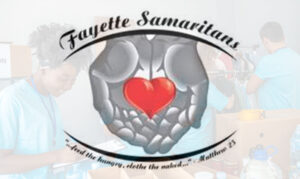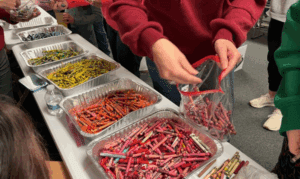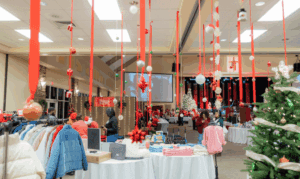On the first Sunday in October we at Prince of Peace joined with Christians around the world to celebrate World Communion Sunday. It is quite a meaningful experience. This year for my sermon I was led to talk about the “Four Tables of Holy Communion.”
The first of these four Communion tables takes us back to the beginning of the Communion story, all the way back into the Old Testament. God’s people, the Children of Israel or Hebrews, were in captivity as slaves in Egypt. Since they had suffered immensely, God had promised their deliverance. In His time, God sent Moses as their deliverer. After quite a complicated series of events, God decided to send a series of plagues, or severe hardships, upon Egypt, which were supposed to cause the Egyptian pharaoh to release the Hebrews from their captivity.
However, through nine of these plagues the pharaoh’s heart was still hardened. The tenth plague was the visit of the angel of death, sent by God to take the life of the first-born son of every household. To protect His people, God commanded Moses to tell the people to sacrifice their best lamb, paint the blood on their doorposts, and eat a special meal. God promised that when the angel of death saw the blood on the faithful households, he would pass over their houses and spare them. The result was their freedom from Egypt.
This meal became the annual “Passover” meal commanded by God and eaten by all His people year after year as they re-told the story. This Passover table is our first table of remembrance for Holy Communion.
We find our second Communion table as we fast-forward hundreds of years to the time of the earthly ministry of Jesus Christ. As a full practicing Jew, Jesus sat down to eat this Passover meal with His disciples on the night in which He was eventually betrayed, falsely arrested, sent through the mock trial that condemned Him to crucifixion and death, and all of which ended in His glorious resurrection. Knowing this outcome, Jesus changed the Old Covenant Passover into the New Covenant Holy Communion on that night we call His Last Supper. He took the bread of the Passover meal, blessed and broke it, and gave it to His disciples saying, “Take and eat. This is My Body given for you (instead of the lamb’s body). Do this in remembrance of me.”
Then He took the cup of wine of the Passover meal, gave thanks, and gave it to His disciples saying, “This cup is the New Covenant in My blood (instead of the blood of the lamb), given and shed for you for the forgiveness of all your sins. Do this in remembrance of Me.”
And so we have Christ giving us Holy Communion at the second table, the table of The Last Supper.
This brings us to the third table of Holy Communion, which is the Communion table or altar we have in our churches today, the one where we gather to receive the bread and wine, the Body and Blood of Christ every time we celebrate this blessed sacrament. And it is at this table where we receive the fulfilled promise of Christ that He is truly present in the bread and the wine with His Body and Blood so that as we eat and drink and believe His promise, we receive the forgiveness of our sins, the strengthening of our faith, and all the benefits of the death and resurrection of Christ, our Lord and Savior.
And when we take Holy Communion, we not only “commune” (join together) with Jesus, but we also “commune” (join together) with all believers who believe and receive the same thing. This gives special meaning to World Communion Sunday.
But there is yet the fourth table. And to remember this table, we begin by becoming familiar with a relatively new symbol and its meaning. The symbol is simply the letter “N” in Arabic.
In northern Iraq and parts of Syria, radical Muslims spray paint this on the doors of homes and businesses of Christians. This is an act of hatred, calling for cruelty and punishment of these Christian people simply because they believe in Jesus as Savior (just like we do).
These persecuted Christians are forcefully given only three choices by the armed extreme Muslim radicals: convert to Islam, be killed, or leave with only their clothes on their back, with almost no place to go. In the meantime, the Christians are levied a harsh tax, leaving them with almost no money and way to provide their living. Christians around the world are now standing with these persecuted Christians through a movement called “I-am-N.” Google it.
So, as we receive Holy Communion in our beautiful churches with beautiful tables and altars, we must remember our brothers and sisters who are even right now, today, being persecuted as they try to have their Holy Communion services at their Communion table.
Find Kollmeyer at www.princeofpeacefayette.org, and join him on Oct. 30 for the celebration of his 30 years in Fayetteville and 40 years in the ministry.












Leave a Comment
You must be logged in to post a comment.